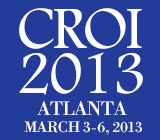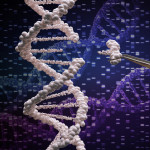 Two new gene therapy studies further the hopes that scientists may develop widely replicable methods to control HIV through stem cell modification, aidsmap reports. Researchers presented findings from the studies as the 20th Conference on Retroviruses and Opportunistic Infections (CROI) in Atlanta.
Two new gene therapy studies further the hopes that scientists may develop widely replicable methods to control HIV through stem cell modification, aidsmap reports. Researchers presented findings from the studies as the 20th Conference on Retroviruses and Opportunistic Infections (CROI) in Atlanta.
In one paper, scientists at the Fred Hutchinson Cancer Research Institute in Seattle extracted haematopoietic stem cells (HSCs), which manufacture blood cells, from the bone marrow of two pigtail macaque monkeys. The researchers then spliced into the stem cells’ genetic material instructions to express a peptide, which is a short chain of amino acids, called mC46. This peptide acts like a fusion inhibitor antiretroviral, blocking HIV’s ability to latch onto the CCR5 and CXCR4 coreceptors on the surface of CD4 cells. The researchers injected the modified stem cells back into the monkeys, replacing 20 percent of one monkey’s HSCs and more than half of the other’s.
After a week, the scientists infected both of the monkeys, along with a pair of control monkeys, with a strain of simian HIV (SHIV) genetically engineered to be particularly virulent. The control monkey’s CD4 levels dropped from about 600 before infection to between 10 and 50 two or three weeks after infection. The two monkeys with the genetically modified stem cells experienced a CD4 cell drop to about 100 after two weeks of infection and then saw their levels rebound to levels measured before infection.
All four monkeys’ viral load leapt to 1 billion after 10 days of infection, after which the control monkeys’ levels dropped to around 500,000 in one and about 10 million in the other. The monkey who received a 20 percent stem cell replacement experienced a viral load drop to about 100,000, and the monkey with over half of its stem cells replaced experienced a drop to just a few hundred. This represented a 320-fold drop in the first monkey and 1,400-fold in the other.
In the second study, scientists at the University of Pennsylvania attached fusion inhibitor peptides to the two CD4 coreceptors, which blocked HIV infection in a test tube. They found that the immune cells could still use the coreceptors for their normal functions: attaching to molecules that activate immune function. This suggests that such a therapy would have less likelihood of being toxic to the body.
To read the aidsmap story, click here.
To read the Fred Hutchinson study, click here.
To read the University of Pennsylvania study, click here.
Advertisement
Advertisement
Advertisement






Comments
Comments